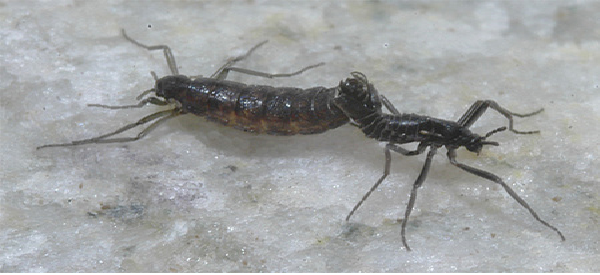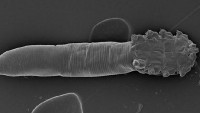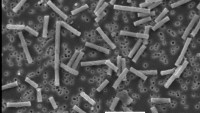Antarctic Midge Unlocks Door to Surviving Extreme Cold
| Paula Marie Navarra | | Aug 13, 2014 10:16 AM EDT |
A study suggests the Antarctic midge, an insect that spends most of its time frozen in the Antarctic ice, has a very small genome because of its adaptation to its extreme environment.
The Antarctic Midge is a wingless fly that remains frozen in the Antarctic ice for most of its two year larval stage.
Like Us on Facebook
When it reaches adulthood, the insect spends seven and 10 days laying eggs until it dies.
David Denglinger from Ohio State University said the genome of the Antarctic Midge lacks many DNA segments and other repeat elements that don't make protein found in most animal genomes.
Lack of this genome could be the answer to surviving the Antartic's cold, dry conditions, he said.
Denlinger said it would be interesting if other extremophiles like ticks and mites living in the Antarctic would have really small genomes.
This kind of genome was once called a junk DNA because of its DNA segments and repeated elements. These are now known to have functions related to gene regulation, he said.
Researchers found aquaporins, or genes involved in water transport in and out of cells, are important in the insect's survival.
They also found out these insects can survive water loss up to 70 percent. Most insects can only survive a 20 percent water loss.
Delinger said when the insect loses 70 percent of its water, they look like dried up raisins. After being poured with water, they plump up and became merry, he added.
He explained the ability to survive extreme dehydration is the key to surviving in low temperatures.
The midge has mechanisms that enable it to be both dehydrated and alive while its cells function normally.
Delinger believes the Antarctic Midge has figured out how to preserve its tissues for a long time. He said having heat-shock proteins turned on all the time might be the key to preserving their tissues.
©2015 Chinatopix All rights reserved. Do not reproduce without permission
EDITOR'S PICKS
-

Did the Trump administration just announce plans for a trade war with ‘hostile’ China and Russia?
-

US Senate passes Taiwan travel bill slammed by China
-

As Yan Sihong’s family grieves, here are other Chinese students who went missing abroad. Some have never been found
-

Beijing blasts Western critics who ‘smear China’ with the term sharp power
-

China Envoy Seeks to Defuse Tensions With U.S. as a Trade War Brews
-

Singapore's Deputy PM Provides Bitcoin Vote of Confidence Amid China's Blanket Bans
-

China warns investors over risks in overseas virtual currency trading
-

Chinese government most trustworthy: survey
-

Kashima Antlers On Course For Back-To-Back Titles
MOST POPULAR
LATEST NEWS
Zhou Yongkang: China's Former Security Chief Sentenced to Life in Prison

China's former Chief of the Ministry of Public Security, Zhou Yongkang, has been given a life sentence after he was found guilty of abusing his office, bribery and deliberately ... Full Article
TRENDING STORY

China Pork Prices Expected to Stabilize As The Supplies Recover

Elephone P9000 Smartphone is now on Sale on Amazon India

There's a Big Chance Cliffhangers Won't Still Be Resolved When Grey's Anatomy Season 13 Returns

Supreme Court Ruled on Samsung vs Apple Dispute for Patent Infringement

Microsoft Surface Pro 5 Rumors and Release Date: What is the Latest?












